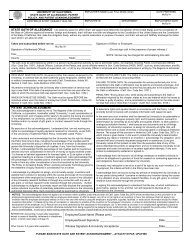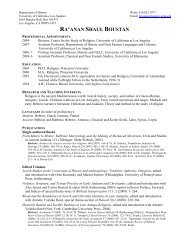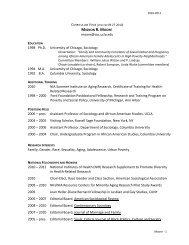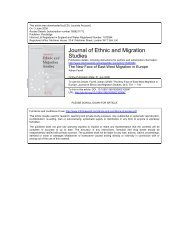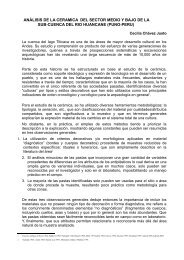The Long-Term Effects of Africa's Slave Trades - Social Sciences ...
The Long-Term Effects of Africa's Slave Trades - Social Sciences ...
The Long-Term Effects of Africa's Slave Trades - Social Sciences ...
You also want an ePaper? Increase the reach of your titles
YUMPU automatically turns print PDFs into web optimized ePapers that Google loves.
USA; Havana, Cuba; Haiti; Kingston, Jamaica; Dominica; Martinique;<br />
Guyana; Salvador, Brazil; and Rio de Janeiro, Brazil. 21<br />
3. <strong>The</strong> sailing distance from the point on the country’s coast that is<br />
closest to its centroid to the closest <strong>of</strong> the two major slave destinations<br />
<strong>of</strong> the Indian Ocean slave trade: Mauritius and Muscat, Oman.<br />
4. <strong>The</strong> overland distance from a country’s centroid to the closest port <strong>of</strong><br />
export for the trans-Saharan slave trade. <strong>The</strong> markets are: Algiers,<br />
Tunis, Tripoli, Benghazi and Cairo.<br />
5. <strong>The</strong> overland distance from a country’s centroid to the closest port <strong>of</strong><br />
export for the Red Sea slave trade. <strong>The</strong> ports are: Massawa, Suakin,<br />
and Djibouti. 22<br />
<strong>The</strong> distance instruments are also illustrated in Figure 7, which shows<br />
the five distances for Burkina Faso. Also shown are the locations <strong>of</strong> demand<br />
in each <strong>of</strong> the four slave trades. In the figure the ports and distance for<br />
each <strong>of</strong> the slave trades is shown in a different color. Further details <strong>of</strong> the<br />
construction <strong>of</strong> the instruments is given in the appendix.<br />
Of the five instruments, there is particular concern that the distance<br />
from a country’s interior to the coast is correlated with the error term in<br />
the second stage. It has been shown that easy access to the coast allows<br />
countries to more cheaply engage in international trade, which increases income<br />
(see Rappaport and Sachs, 2003). In addition, distance to the coast is<br />
correlated with the measurement error that results from the under-sampling<br />
<strong>of</strong> slaves from the interior. Even though the distance to the coast is problematic<br />
as an instrument, it is still useful to report the estimates with the<br />
variable included as part <strong>of</strong> the instrument set. As I show in Section B <strong>of</strong> the<br />
appendix, if the instrument is positively correlated with the measurement<br />
error and/or negatively correlated with the error term in the second stage,<br />
then the IV estimate will be biased towards zero. <strong>The</strong>refore, the IV estimate<br />
with distance to the coast in the instrument set is still useful because it can<br />
be taken as a lower bound estimate <strong>of</strong> the effect <strong>of</strong> slave exports on income.<br />
I also report estimates after eliminating the distance to the coast variable<br />
from the instrument set.<br />
21 Data on slave imports are from Eltis and Richardson (forthcoming). <strong>The</strong>re is a significant<br />
drop in the volume <strong>of</strong> slave imports between the 9th and 10th largest markets.<br />
Because <strong>of</strong> this natural break, I use the top 9 markets.<br />
22 For the island countries, one cannot reach the ports <strong>of</strong> the Saharan or Red Sea slave<br />
trades by traveling overland. For these countries I use the sum <strong>of</strong> the sailing distance and<br />
overland distance.<br />
29




